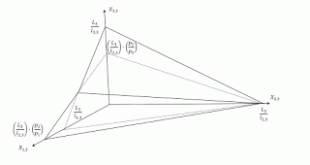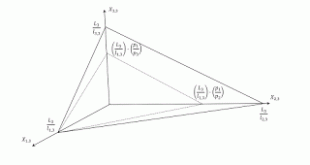Today is the 200th birthday of Karl Marx. My favorite school of thought in economics is sometimes called Neo-Ricardianism, instead of Sraffianism. As I understand it, the label "Neo-Ricardianism" was invented in 1974, as an insult, by Bob Rowthorn. Basically, he claimed to more closely follow Marx, and claimed that the Neo-Ricardians were, like neoclassicals, bourgeois economists. Other Marxist economists at the time offered arguments along the same lines. Franklin Roosevelt III, for...
Read More »How Has Economics Failed?
The Financial Times is having a debate about whether economics has failed. The first interchange is here, with some followups here. (I happen to have two tabs about neoliberalism open at the moment as well.) Mainstream economics is a failure in so many dimensions that its failure cannot be characterized shortly in any comprehensive way. For example, I am not going to discuss funding sources and economics role as a system justification. Even so, you might find this post long and...
Read More »On the Gain and Loss from Trade
I have written up my recent explorations in the theory of international trade. Abstract: This article considers a model of international trade in which the number of produced commodities does not exceed the number of countries engaged in trade. Technology is modeled such that each commodity can be produced in each country from a finite series of dated labor inputs. The existence of a positive rate of profits may lead a country to specialize differently than how it would with a zero rate...
Read More »Elsewhere
Howard Reed argues we should rip up textbooks for mainstream economics and start over. (Some of what he says echoes an argument of mine.) I do not think Diane Coyle addresses Reed's points. Cahal Moran argues the problem is economics, not economists. Beatrice Cherrier has some frankly speculative posts on what limitations economists accepted in emphasizing tractability in developing models. Nathan Robinson does not like the word "neoliberalism", but understands there is a point to using it....
Read More »Class Struggle And Specialization In International Trade
This post continues a previous numeric example. The firms in each of three countries are assumed to know a technology for producing corn, wine, and linen. The technology is such that each commodity can be produced in each country. The technology varies among countries. Each of these small open economies can specialize and obtain non-produced commodities through foreign trade. I confine myself to patterns of specialization in which: Each country produces exactly one commodity...
Read More »The Gain And Loss From Trade: More On A Numeric Example
Figure 1: The Production Possibility Frontier, With And Without Trade, In "Germany"1.0 Introduction I continue to blunder around in parameter space in exploring my numeric example in the previous post. In this post, I continue to adopt the same assumptions for a model of three countries engaged in international trade with three produced commodities. In particular, workers are assumed to be unable to immigrate, capitalists only invest in their own country, and produced means of production...
Read More »The Loss From Trade: A Numeric Example With Three Countries And Three Produced Commodities
Figure 1: The Production Possibility Frontier, With And Without Trade, In "Germany"1.0 Introduction This post presents a numeric example of a Ricardian model of small, open economies engaged in trade. Each of three countries specializes in producing one of three commodities. Technology is modeled following an Austrian approach. Each commodity can be produced in each country from inputs of labor and "capital". Endowments of labor are taken as given parameters. It makes no sense to take the...
Read More »Trollope Trolls The Way We Live Now
A couple of months ago, I read Anthony Trollope's novel, The Way We Live Now. Even though the novel was written and set in England in 1870, I consider this post to be about contemporary American politics. Are any of the characters in the novel sympathetic? Maybe Lady Carbury, to a certain extent, and her cousin Roger Carbury. But I want to focus on Augustus Melmotte. Melmotte is successful in business, but is initially considered vulgar by elite socialites in London. His business...
Read More »Comments on Yoshihara and Kwak on Sraffian Indeterminancy
1.0 Introduction Yoshihara and Kwak (henceforth YK) presented a paper, on Sraffian indeterminacy, at the last annual meeting for the American Economic Society. I want to register my qualified disagreement. 2.0 Yoshihara and Kwak against Mandler YK are arguing against Michael Mandler. In a 1999 paper, a book, and a series of papers since, Mandler has been criticizing Sraffa and his followers. In Mandler's reading, Sraffa argues that, in neoclassical theory, the distribution of income is...
Read More »Structural Economic Dynamics with a Choice of Technique in General
Many - not all - of my recent numerical examples have a certain abstract pattern: At the start of the time under consideration, one technique is uniquely cost minimizing, for all feasible rates of profits. Coefficients of production decline or some markups over the normal rate of profits vary. A fluke switch point appears. Switch points move along the wage frontier, and interesting phenomena occur. These can be other fluke switch points. Reswitching, the recurrence of techniques,...
Read More » Robert Vienneau: Thoughts Economics
Robert Vienneau: Thoughts Economics


